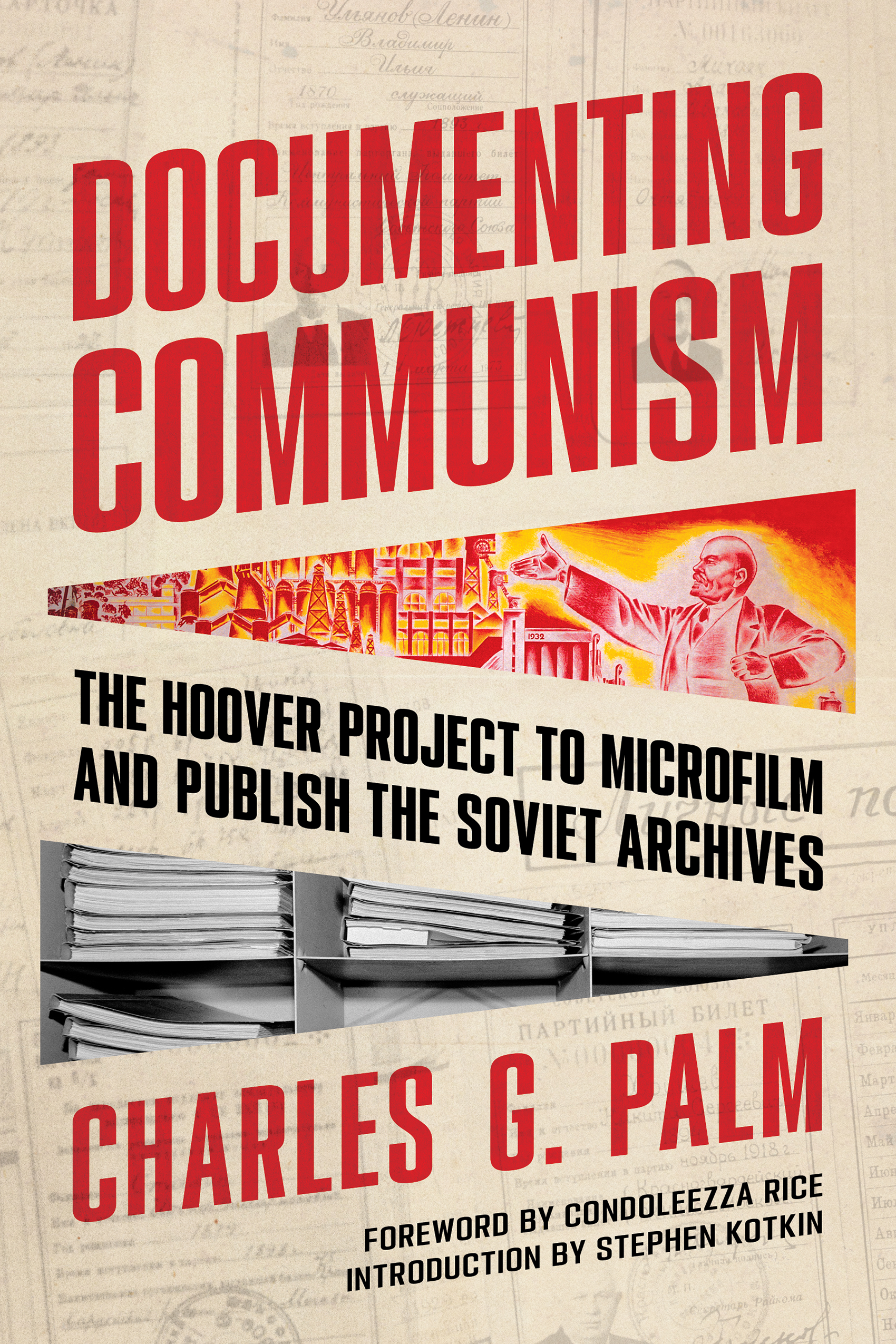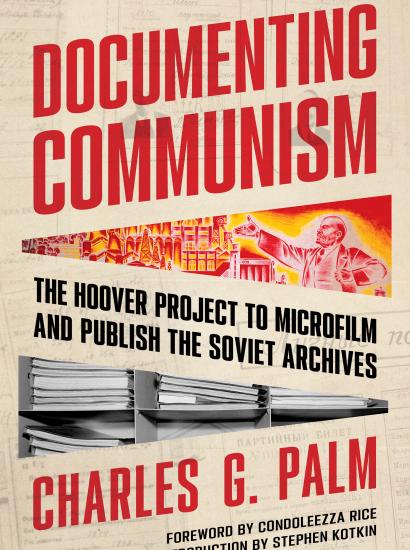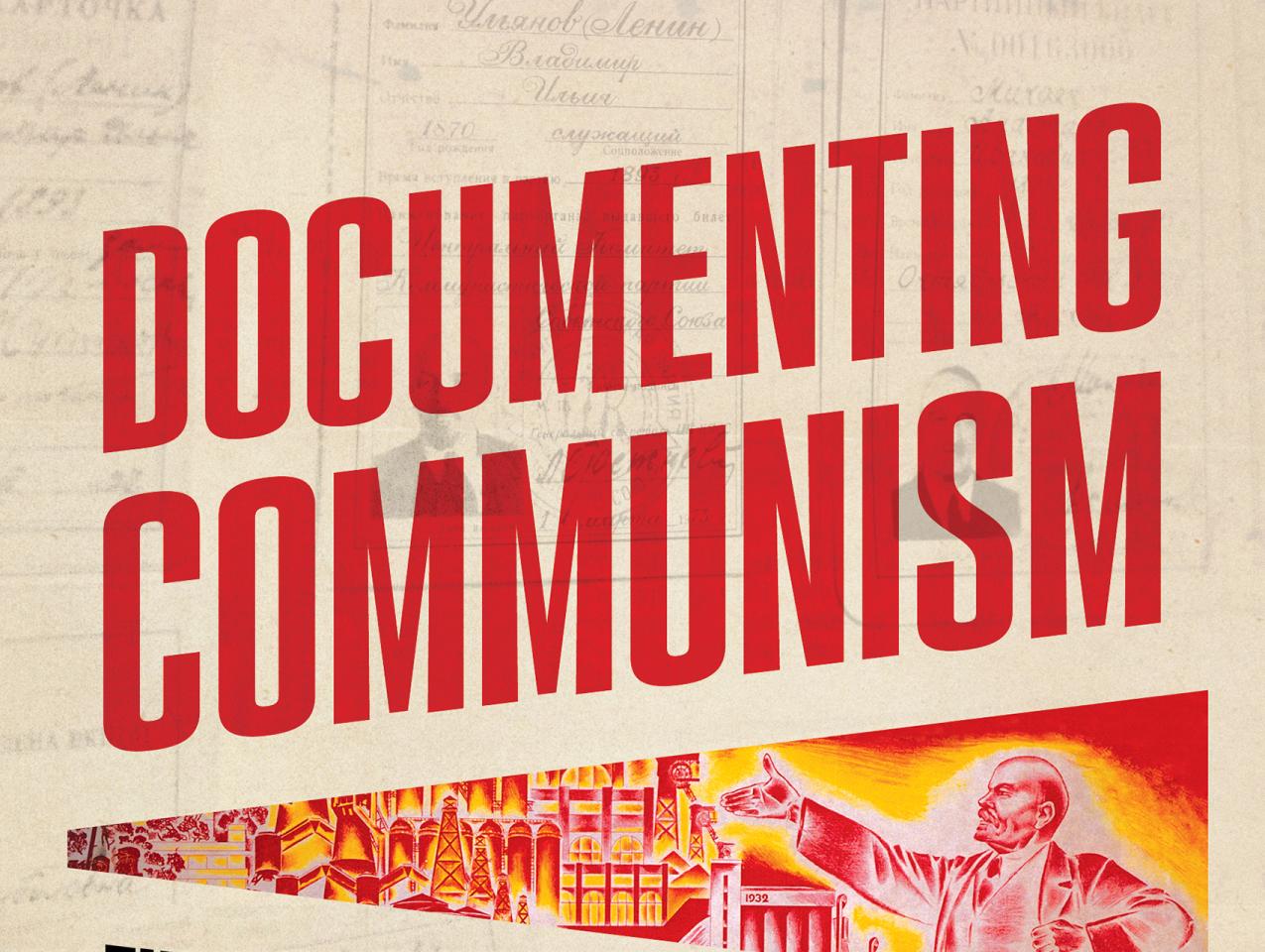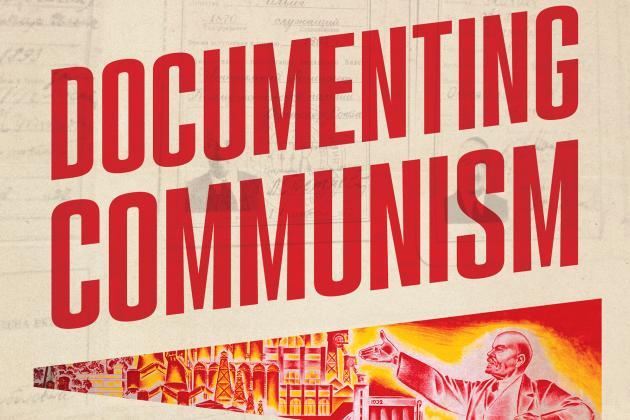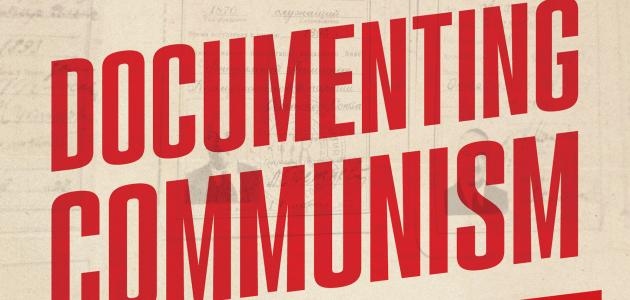- History
- Russia
- Revitalizing History
This interview with Charles G. Palm, deputy director (emeritus) of the Hoover Institution, delves into his new book, Documenting Communism: The Hoover Project to Microfilm and Publish the Soviet Archives. Here, Palm discusses the careful personal diplomacy that persuaded post-Soviet archivists to trust Hoover with their historical legacy.
Jonathan Movroydis: Before the fall of the Soviet Union, what was the scope of Hoover’s Russia collection?
Charles Palm: It began with a Hoover historian named Frank Golder, who went to revolutionary Russia in 1921, along with the American Relief Administration staff, which had been organized by Herbert Hoover to provide famine relief to Russia. He went along with the ARA, as it was called, to gather up materials about Russia—not only revolutionary Russia but also czarist Russia. While he was there, he gathered up everything he could: all kinds of special materials, diaries, letters, reports, leaflets, pamphlets, the usual types of materials that make up the Hoover Archives. One collection that was especially noteworthy consisted of all the internal reports produced by various departments of the new revolutionary government. We now have all of those.
Subsequently, we continued to acquire materials on Russia, and I’ll mention two collections in particular. One is the records of the Paris office branch of the Okhrana, the secret police of Czar Nicholas II, whose job was to protect the czar from all these revolutionaries trying to overthrow his regime. Since the most dangerous revolutionaries were in Europe outside of Russia, they set up an Okhrana office in the Paris embassy, and the agents’ job was to go around and track these people. In doing that, they accumulated all kinds of materials, including agents’ reports and photographs of revolutionaries. They intercepted Lenin’s mail, copied it, and put the mail back in the post. Our collection has many intercepted letters of Lenin, plus all the agents’ reports as well as photographs and other records that police departments around Europe shared with the Okhrana.
The story of the acquisition is also quite interesting. When the Soviet Union was recognized by the French government in 1924, France was obligated to turn over that Russian embassy building to the Bolsheviks. The officials of the provisional government, who held on to that building, did not want to turn over the files to their enemies, so they secretly boxed them up and sent them to the Hoover Institution.
The man who arranged that, General Nikolai Golovin, had been a general in the czar’s army and was a collecting agent for Hoover. He contacted the American Embassy to facilitate this. With the help of Herbert Hoover, then secretary of commerce, he had them all shipped out via US diplomatic pouch, evading the French customs.
The Russian provisional ambassador, Vasily Maklakov, told the French government that he had burned everything. Instead, the files came to Hoover secretly. The condition of the gift was that we not reveal the existence of the records until Maklakov died. He did not want to get run over by a bus. When Maklakov died in 1957, some thirty years later, these archives were opened up. This fascinating story is told in full by Hoover fellow Bert Patenaude in the Hoover Digest (Summer 2021).
Movroydis: How did the Soviets react?
Palm: They wanted it all returned. That did not happen. The records eventually did return as a part of this project I describe in Documenting Communism—not the originals, but microfilmed copies.
The second collection I wanted to mention was that of Boris Nicolaevsky. He was himself a Russian Communist, but part of the Menshevik branch, who were less radical. In the 1920s, Stalin executed a lot of the Mensheviks, and those who didn’t get executed emigrated. Nicolaevsky went to Germany, and he spent the rest of his life collecting materials about the revolution, including the papers of many of his Menshevik comrades. Hoover purchased this collection in the 1960s. It’s about four hundred boxes of materials on the Russian Communist Party and its leaders, including a large section of Leon Trotsky’s papers, including his correspondence, and, quite interestingly, the manuscript of Trotsky’s classic work, The Russian Revolution, in his own handwriting.
And so, by the 1990s, when my project began, Hoover’s Russian collection was one of the most renowned collections in the world outside of Russia.
Movroydis: The fall of the Soviet Union gave Hoover a chance to acquire ten million pages of Soviet documents. How did this opportunity arise?
Palm: In one sense, we were lucky. In another sense, we took advantage of the luck that was presented to us. The first bit of luck came in May of 1991, three months before the coup that precipitated the collapse of the Soviet Union. I had learned that Boris Yeltsin’s archivist, Rudolf G. Pikhoia, was visiting the United States. At that time, Yeltsin represented the reformed democratic forces in Russia. He was speaker of the Supreme Soviet, the parliament of the Russian Republic, which was one of the fifteen republics that made up the Soviet Union. Mikhail Gorbachev was still in power. I thought that it would be interesting to bring Yeltsin’s archivist to Hoover, so I extended an invitation and he came. We made friends instantly.
He was very much unlike the Soviet archival officials we had dealt with in the past. He was expansive; he was interesting. He was reform-minded. He was an academic. He was not a Soviet official, and he was interested in doing some things with us. So, we proposed some modest projects. One would be a joint exhibit, and another was a project to create some cataloging records of his materials and enter these descriptions into our bibliographical database. A third one was to do some exchanges of materials. At that time, he didn’t control very many interesting archives.
All the Soviet party archives, and all of the Soviet Union government archives, were still under control of Soviet archivists and were very much closed to everybody. But we thought it might be useful someday to have that contact, and so we made it. Well, three months later, everything suddenly changed.
The hard-liners in the Soviet government staged a coup against Gorbachev, and the Yeltsin people, to their great credit, showed bravery and resisted, occupying the Russian Republic parliament building. And our new friend Pikhoia was in that building at the time of the coup, along with a couple hundred resisters. There were tanks in the streets. The coup leaders tried to dispose of Yeltsin, but the soldiers would not fire on him. The coup collapsed, and Yeltsin eventually took over the government. He immediately assigned Pikhoia the task of seizing the Communist Party headquarters and all its archives. By acting quickly, they saved countless documents from certain destruction. Then, once he had gained full control of the government, he put Pikhoia in charge of all the Soviet archives. Not just the party archives, but the records of the State. All of a sudden, Pikhoia was the man to see in Moscow for Soviet archives.
Why did the Yeltsin government want to open up and publish these archives? There were several motivations. First, Yeltsin’s political enemies were now the old Soviet establishment and the old Soviet Communist Party. They were his opposition. So why not open up their archives? Another motivation was that suddenly there was a great desire and impetus to open up Russia to the West and to the values of the West. This meant transparency, facing your history and dealing with your history, as tragic as it might be, and becoming a free nation. They were truly interested and committed to becoming more of a democratic and freedom-loving country.
Of course, every archivist wants to take steps to preserve the materials in his or her custody. This was a third motivation. The accepted method for preserving records on paper at that time was to microfilm them. Microfilm, if you do it right and store the microfilm properly, will last several hundred years. Paper, especially paper that’s full of acid, won’t last a hundred years. You look at newspapers: they all crumble apart. You have to take steps to preserve your collection, and the Russians were interested in doing that. One of the benefits of our project was to give them a preservation microfilm copy of their records.
Movroydis: Hoover has a reputation for collecting Russian materials and preserving them, but there are also other big institutions as well as international archives interested in the newly opened Soviet archives. So, how did the Hoover Institution prevail?
Palm: Every major competitor of ours, including publishers, was interested in getting into these records. The records constituted one of the most important collections of secret records in the world, and they were just now being opened. The competition came down to Hoover and the Library of Congress, which had a partnership with a microfilm publisher named Research Publications International, a subsidiary of the Thomson Corporation (now Thomson Reuters), a giant media company. A large corporation allied with a major federal repository—the Library of Congress—against little old Hoover Institution and its handful of donors. So, why did Pikhoia pick us?
First, we have had a very strong reputation as one of the major repositories of Russian materials outside Russia. Our collections on Russia are stronger than any other institution in the United States, with the possible exception of Harvard or Columbia. A second factor, I think, was the way we went about the competition. When I went to Moscow in November 1991, after the coup, I did not immediately propose a large, expansive program that would have scared them away. What I started with was two smaller projects that would directly and immediately benefit them. One was the joint exhibit we talked about earlier, which would bring some of their archivists out to California. Who can turn down a trip to California? The other was the digital project, which would get them computer equipment. They were very interested in getting computers, which they didn’t have. They could see this was a direct and immediate benefit to them and wouldn’t cost them anything or expose them to public criticism. It was a way to break the ice and get them comfortable with us.
Then I invited Pikhoia to the Hoover Institution Board of Overseers meeting that was going to be held in Washington in January 1992. I put him on our program as a speaker, along with the likes of General Colin Powell, Secretary of Defense Richard Cheney, and members of Congress. I wanted him to come see Hoover in action. It also gave me an opportunity to introduce him to some of our major donors, and for our donors and overseers to meet him. This project could not have been successful without Pikhoia liking us and our board liking him.
Toward the end of that meeting, I proposed a major copying project, not a small one. And because of the early efforts, he trusted me. He trusted Hoover. I also had a chance to raise some money for the project at that meeting: I was quickly able to raise $3 million in pledges. Pikhoia saw that we had the resources to undertake a major project, and that we had the political clout to protect it if needed.
The third factor, as we were going over the package we were offering to them, I saved till the last: in return for all of the microfilm reels of archives that they were going to produce for us, we would give them microfilm copies of all of our Russian collection. That transformed a project between unequals—between the “rich” Hoover Institution and the “needy” Russian government—into one of equals. Equal exchange, one reel from them, one reel from us. Moreover, it was an offer no other competitor could match. At that point, Pikhoia reached across the table and shook my hand.
Movroydis: Were there political forces on the Russian side who wanted to see this project stopped?
Palm: Well, when we concluded the agreement in April 1992, all the political forces were on our side. Yeltsin was strongly in power. Obviously, the old residue of the Communist Party didn’t like what we were doing. Pikhoia and Yeltsin had seized their archives and now were opening them up to the world. We had some immediate media pushback. For example, when we announced this project, one of the first questions I got from a Russian journalist was, how much did I bribe Pikhoia to get him to sign our agreement? That was the attitude of those who didn’t like to see rich Americans coming into their country and taking advantage of the situation, as they saw it. Now, of course, we didn’t bribe anybody and nobody asked us for a bribe.
Opposition was not a serious problem until December 1995, when the Yeltsin government, after a year or so of difficult economic and political setbacks, lost the Duma election. The resurging Communist Party won a plurality of seats, so obviously that was a threat to the Yeltsin government and to Pikhoia. Within his organization, which included dozens of repositories and many administrators, some resentment had built up against him, and those who resented him used this political weakness against him. The next month, I got a letter from Pikhoia telling me that he had to end the project, saying he no longer could protect it within his own organization, in the government, or among the broader Russian public. I went to Moscow to try to create some possibilities for the future. I knew we probably were facing the end of the agreement, but I wanted to end it on a friendly note, not a note of enmity.
When I met Pikhoia and his colleagues in Moscow, I proposed that Hoover would let them keep their equipment, that we would continue to pay royalties, and that we would meet our promise of giving them microfilm copies of Hoover’s collection. All they had to do was join us in a press release announcing the end of the project on friendly terms, mutually agreeable terms, and their intention to start a new negotiation. This we did. Sadly, Pikhoia resigned shortly afterward. I knew we had probably lost him. He was an excellent partner and was committed to the project, and he protected it during those early years.
Shortly after that difficult January meeting, our luck changed. In June, Yeltsin won re-election as president of Russia. The second bit of good luck was that one of the repositories—three had participated in the first part of this agreement—was friendly to us. It was headed by Sergei Mironenko, who was in charge of the repository that held the records of the Gulag, which clearly were of interest to us. Negotiations took place with him and his repository, and we eventually concluded an agreement. It led to the microfilming of three million pages of Gulag materials. These records were very, very important, particularly for two reasons. The first is that they covered practically the whole expanse of the Soviet Union from 1918 to 1960. The second is that the Gulag was “the quintessential expression of Soviet communism,” as Anne Applebaum has described it in her history. So, even though the first agreement came to an end, we were able to conclude a new one and continued filming all the way to the end.
We were in Russia twelve years—1992 to 2004. We microfilmed ten million pages on to 11,817 reels of microfilm, a massive amount of material. If you stacked up ten million pages, it would be the height of six and a half Washington monuments.







